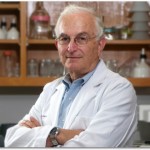Illnesses such as diabetes and heart disease are affecting increasing numbers of young people in developing countries. In light of this worrisome trend, K. M. Venkat Narayan, MD, and his colleagues are launching a new center of excellence aimed at preventing and controlling heart disease and diabetes in India and Pakistan.

K.M. Venkat Narayan, MD
It’s essentially a center of excellence for cardiac metabolic disease prevention and control in South Asia with Emory playing a very important role in the project, says Narayan, professor of global health and epidemiology at Emory’s Rollins School of Public Health and professor of medicine in Emory School of Medicine.
The primary partner of this grant will be the public health foundation of India, New Delhi. Emory is the developed country academic partner working with other network partners, namely, the Madras Diabetes Research Foundation in Chennai, India and the Aga Khan University in Karachi, Pakistan.
The center will focus on surveillance, prevention of mortality stemming from cardiovascular disease and diabetes, and training young investigators in the field of diabetes and cardiovascular disease prevention and control.
It’s estimated that by 2030, the number of people with diabetes will reach 400 million worldwide, double today’s number, says Narayan. Cardiovascular disease is a major cause of death among people with diabetes with 80 percent of deaths from chronic diseases worldwide occurring in low and middle-income countries.
What is particularly worrying about developing countries is that diseases like diabetes are hitting younger people, says Narayan. The implications, he says, are young people who would otherwise be economically productive must leave the labor market. In addition, in India, one person having diabetes uses 25 percent of the family’s income just for his own treatment. The economic impact and the health impact are enormous, says Narayan. Read more in Emory Public Health magazine.















